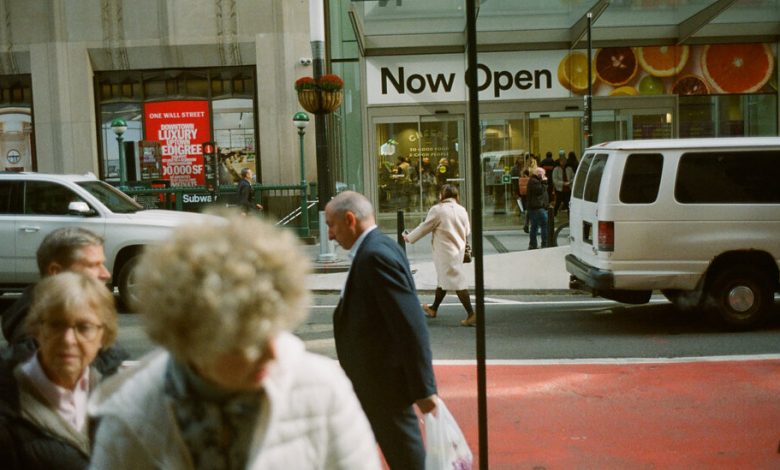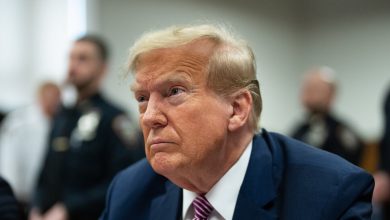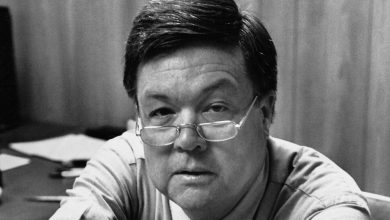The N.Y.C. Neighborhood Where Families Are Filling Up Empty Offices

For all the talk about converting New York City’s languishing office buildings intohousing, just one neighborhood has done it on a large scale: the financial district.
In the past few years, luxury apartments have been carved out of a 1907 office tower at 84 William Street and an Art Deco skyscraper at 1 Wall Street that was once the Bank of New York’s headquarters. Five other office buildings are being gutted and turned into residences, including a project that is the largest such conversion in the United States.
But the high-rise conversions are just part of a wave of modifications in the area that started decades ago with the transformation of low-rise buildings and continues today with enormous glass and steel towers.
The financial district name has become something of a misnomer as the neighborhood, once derided as a desert after the bankers commute home, becomes a vibrant residential enclave at Manhattan’s southernmost tip.
There are now 66,000 residents, up from 13,700 in 1990, in the area roughly bounded by Chambers Street and the Brooklyn Bridge to the north and the West Side Highway on the west. There is even a new Whole Foods.
The financial district’s shift offers a road map for, and glimmer of hope about, what could happen in neighborhoods from Lower to Midtown Manhattan that are saddled with a glut of empty offices as companies continue to slash space in the pandemic’s wake. Real estate analysts predict that a large swath of buildings — notably decades-old offices with outdated layouts — will remain unattractive to most companies and will need to find other uses.
Mayor Eric Adams and Governor Kathy Hochul have championed residential conversions as a solution to both the office surplus and another major problem, the city’s housing shortage. But few buildings are making the change. Such modifications can be expensive and impractical given the difficulty of creating light-filled residences from dark, deep interiors.
The transformation of the financial district grew out of two setbacks — the exodus of banks and insurance companies from Lower Manhattan to Midtown, and the Sept. 11 attack — that have led to suited 9-to-5 workers being steadily replaced by parents pushing strollers.
The area’s compact lots created a preponderance of slender buildings with high ceilings and large windows, making conversions easier.
Since the pandemic began, nearly 1,500 residences in new buildings and conversions have been added in the neighborhood. Thousands more are expected in the coming years, including in what is considered the country’s largest conversion: 1,300 apartments in an office tower vacated by JPMorgan Chase in early 2021.
Cory Levy, 26, said he had long been fascinated by the financial district’s charm, like its short streets that are a reminder of when the Dutch settled the area as New Amsterdam, before Manhattan was laid out on a grid.
Yet, friends warned him not to move there.
“They said it was a ghost town,” Mr. Levy said.
He decided to have a look after work, visiting a rooftop bar, restaurants and coffee shops.
“It’s not the East Village,” he said, “but it is residential, and if you like to go out and do stuff late at night, there are places to eat and drink.”
He loved the area and signed a lease on an apartment with his girlfriend in April, a one-bedroom unit in 57-story former office tower that was converted in 2008.
Mr. Levy said the area had major advantages over other neighborhoods. About half of the city’s subway lines stop nearby, as well as multiple ferries and the PATH Train to New Jersey. There are drawbacks, he acknowledged: Sunlight can be hard to find on the narrow corridors.
The financial district’s makeover began in the mid-1990s when the office market faced similar challenges. As vacancies climbed, state lawmakers approved tax incentives for developers who converted languishing office towers into residences. A building boom followed.
Nearly 13,000 units had been created by the time the incentives expired in 2006, according to an analysis by the Citizens Budget Commission. Before 1990, the area had about 7,400 total residences, according to the Downtown Alliance, a nonprofit organization that manages the local business improvement district.
The conversion of offices continued even after the incentives expired, but at a slower pace. Joey Chilelli, a managing director at Vanbarton Group, a real estate company, predicted that the latest blow to the office market would most likely cause more conversions in the financial district, sometimes called FiDi.
The neighborhood has the highest office vacancy rate in Manhattan, according to the real estate firm Colliers. Nearly 27 percent of office space is for lease, the group said, up from 11 percent before the pandemic.
Vanbarton Group is redeveloping the latest conversion in the neighborhood, creating 588 apartments at 160 Water Street. The company bought the property in 2014 and had planned to keep it as offices until the pandemic arrived. Apartment leasing starts this winter.
“A lot of buildings down there are ripe for conversion,” Mr. Chilelli said. “There will be this continued march forward as people discover that FiDi is actually a great place to live.”
Over the years, some of the city’s earliest skyscrapers, including 15 Park Row, have become housing. But so have many modern office buildings that struggled to keep business tenants in the 1980s and ’90s, including 90 William Street, near the Federal Reserve Bank of New York.
Ruth Cheng was one of the first tenants to move into 90 William Street in 2008, buying a condominium with her husband after they visited a sample unit. They raised two children there until they had a third and needed more space.
“We didn’t even really look elsewhere, said Ms. Cheng, 49, adding that her children’s schools were in the neighborhood. “We wanted to stay in FiDi.” The family now lives in a new building two blocks away.
During the family’s 15 years in the area, multiple schools have opened, as have new restaurants and shops, including at the nearby South Street Seaport. One of the neighborhood’s newest shops is Best Sicily Bottega, an Italian cafe and grocery store on Beaver Street.
The store’s founders, Silvia Lombardo and Nicolas Calia, met via Instagram during the pandemic and discovered that they both lived in the financial district and had grown up 10 minutes from each other in Sicily. When they met, Ms. Lombardo owned an online store that sold Italian goods but she wanted to showcase them in a brick-and-mortar shop along with food like olive oil cakes and meatballs that were made from her family’s recipes.
With their shared love for Sicily and food, they opened the shop in May across the street from Ms. Lombardo’s apartment. They said they had not considered opening anywhere else and had decided to stay open after work hours to serve local residents takeout dinners, like pasta on Fridays.
“We really believe that something is changing here,” Ms. Lombardo said.




